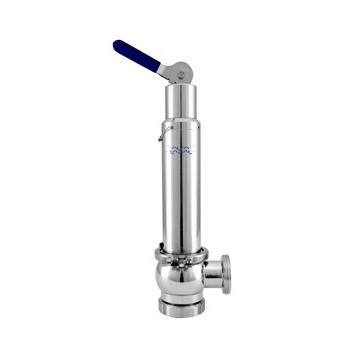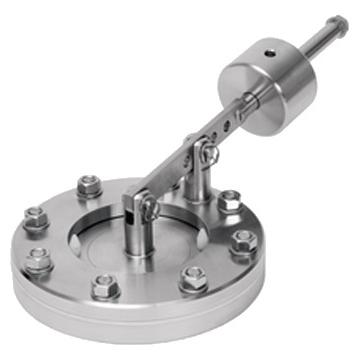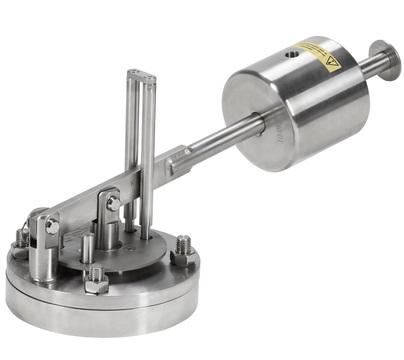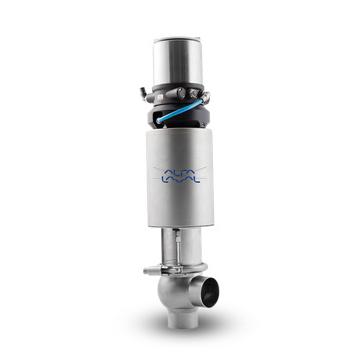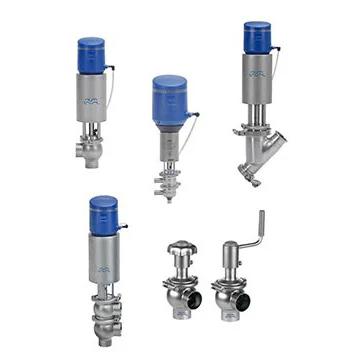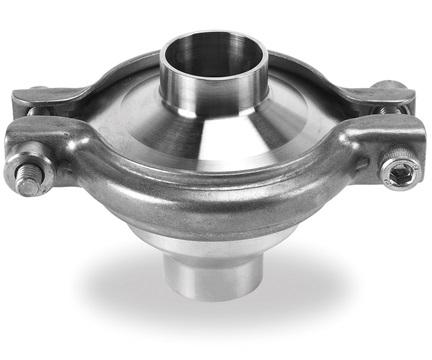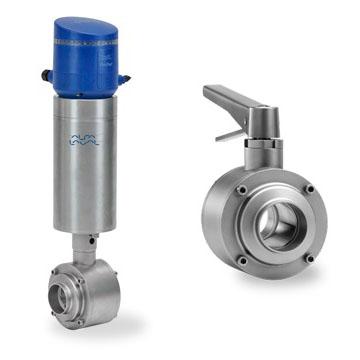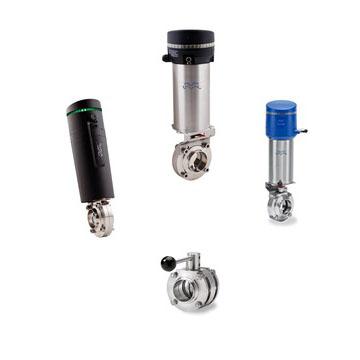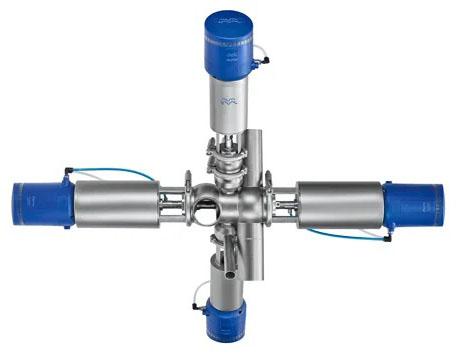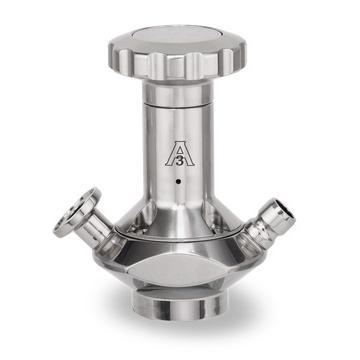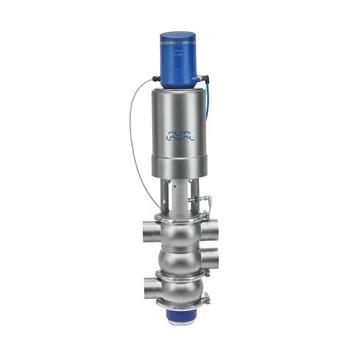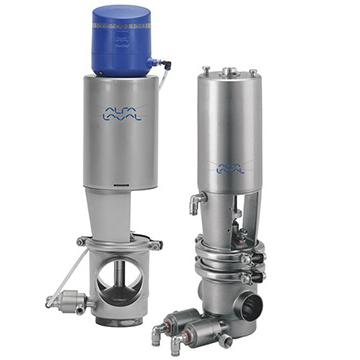The Alfa Laval Safety Valve protects your equipment, your environment, and the health and safety of your workers.
This safety device is designed to open and relieve excess pressure from vessels or equipment and then reclose and prevent the further release of fluid when the system returns to normal.
 Hotline: +84 906 803 393
Hotline: +84 906 803 393
Product detail
-
Product codeSafety Valve
-
APPLICATIONSDairy, food and beverage, and biopharm industries
Concept
The Alfa Laval Safety Valve is a spring loaded safety valve used to prevent overpressure in tanks and vessels in the dairy, food and beverage, and biopharm industries to reliably avoid damages to human beings and equipment.
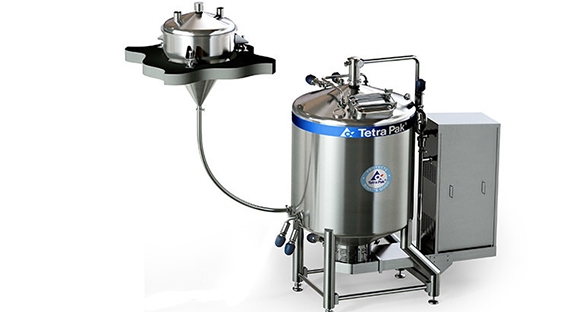
Working principle
It is used to prevent inadmissible over pressures of fluids in tanks, containers and plant sections. From the factory the valve is configured with a set pressure upon request that is greater than the operating pressure. The valve opens against a spring force if the operating pressure increases the set pressure.
Preferably, the Alfa Laval Safety Valve should be installed vertically. If mounted horizontal the set pressure will be a bit lower than specified due to the missing weight of the piston. Highest effect on DN80 and DN100.
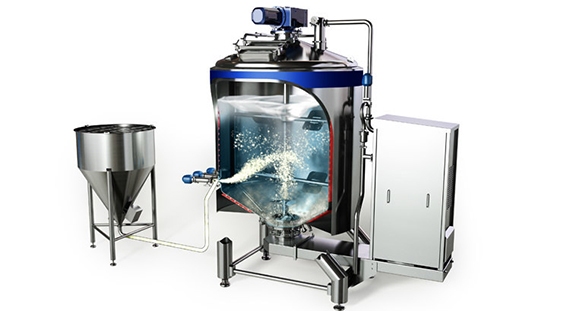
Standard Design
The Alfa Laval Safety Valve comes in sizes from DN25 to DN100 with spring loaded set pressure range from 0.2 to 12 bar.
The valve can be pneumatic or manually operated. Alfa Laval Safety Valve is delivered with PED certificate. Compliance to EN 4126-1 Compliance to PED 2014/68/EC of the European Community. Fluid group II (Non-hazardous fluids).
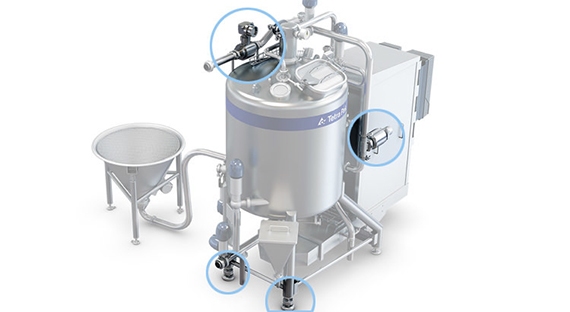
Designed for efficient emptying of the drum to minimize waste
Ingredients are supplied in drums (buckets, containers or barrels). To empty the drum as thoroughly as possible, a lance is placed inside the drum and used to suck up the ingredient – enabled by the vacuum in the mixer. This prevents the waste of costly ingredients. Once production is complete, the lance is placed in the CIP station and cleaned in the CIP loop together with the Tetra Pak® High Shear Mixer.
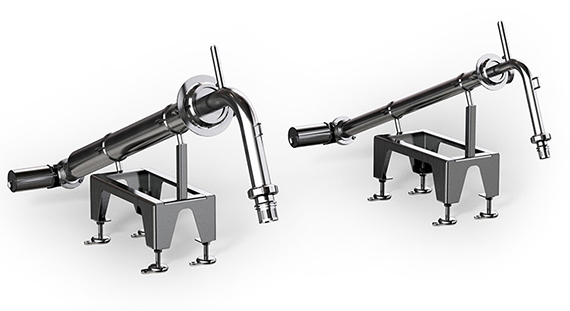
Technical specifications
-
Product codeSafety Valve
-
TemperatureTemperature range: . . . . . . . . . . . . . . . . .+5°C to +95 °C
Max. sterilisation temperature, dry steam: . .140 °C -
APPLICATIONSDairy, food and beverage, and biopharm industries
Materials
Product wetted parts: . . . . . . . . . . . 1.4404 (316L)
Other steel parts: . . . . . . . . . . . . . . 1.4301 (304)
Seals: . . . . . . . . . . . . . . . . . . . . . . EPDM
External finish: . . . . . . . . . . . . . . . . Ra 1.5-2.5 μm
Internal finish . . . . . . . . . . . . . . . . . Ra 0.8 μm
Connections: . . . . . . . . . . . . . . . . . Liner/nut -male DIN 11851
Option:
Inductive sensor for feedback is available for standard and pneumatic
lifting - see instruction manual for detail.

Enables efficient mixing
The vacuum system allows for automatic dosing of powder ingredients in a controlled and reliable manner. It draws ingredients into the mixer, eliminating the need for an operator to do this heavy work. The product is deaerated (i.e. the air is removed from it) enabling higher uptime in the rest of your downstream line. When there is air in the product, this causes burn-on in the downstream equipment, implying a need for more frequent cleaning.

Enables smooth, uninterrupted production
The level control works in combination with the product inlet/outlet to keep the right amount of fluid circulating in the system. If the level gets too high or too low, the load cells and frequency controlled outlet pump return it to the desired level. The amount of powder in the mix also fluctuates during production (be it e.g. sugar, lactose, stabilizers). Regardless of how much powder is entering the mixer, this system maintains steady production.

Designed for efficient emptying of the drum to minimize waste
Ingredients are supplied in drums (buckets, containers or barrels). To empty the drum as thoroughly as possible, a lance is placed inside the drum and used to suck up the ingredient – enabled by the vacuum in the mixer. This prevents the waste of costly ingredients. Once production is complete, the lance is placed in the CIP station and cleaned in the CIP loop together with the Tetra Pak® High Shear Mixer.



